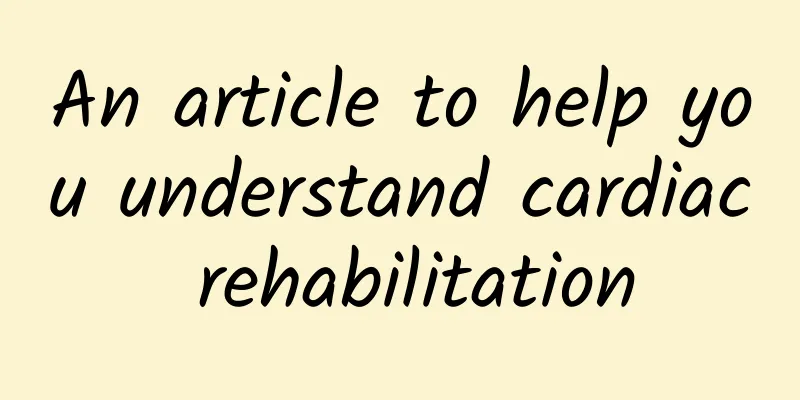An article to help you understand cardiac rehabilitation

|
Nowadays, with the aging of the population and the acceleration of social urbanization, the incidence of cardiovascular disease continues to rise and has become the leading cause of death in the world. Cardiovascular disease is a controllable but difficult to cure disease. If it is not well controlled after the onset of the disease, it will cause a vicious cycle of repeated illness and even eventually lead to premature death. Cardiac rehabilitation is a process of systematic, standardized, long-term and refined treatment of various risk factors for cardiovascular disease. Cardiac rehabilitation is to maintain the heart with problems. Doctors help patients repair psychological and physical trauma, restore quality of life and work ability, and return to life and society. Compared with cardiac treatment without rehabilitation, cardiac treatment with rehabilitation can reduce the total mortality rate by 20%, the mortality rate of cardiovascular disease by 30%, and the re-hospitalization rate has also dropped significantly. Cardiac rehabilitation has gradually become an indispensable part of the "rehabilitation" process of patients with heart disease. Who can benefit from cardiac rehabilitation? What does cardiac rehabilitation include? Can you still walk as fast as before after having heart disease? Let's learn about it together today! The picture comes from the Internet 1. What is new about cardiac rehabilitation? The picture comes from the Internet Cardiac rehabilitation is a comprehensive treatment for cardiovascular diseases, including exercise, medical guidance, health education, psychological assessment, nutritional guidance, etc. Exercise is the key to the entire rehabilitation work. Its main goal is to reduce recurrence and mortality, enhance the patient's ability to exercise, establish safe living ability, and improve the patient's quality of life. Why is exercise a key factor in cardiac recovery? It is a comprehensive evaluation of the exercise prescription (such as aerobic exercise, resistance exercise, etc.) of cardiovascular patients. In addition, in terms of cardiac recovery, traditional Chinese medicine fitness is irreplaceable. Tai Chi, Ba Duan Jin, Wu Qin Xi, etc., have well solved the single defect of traditional sports rehabilitation methods, and have the functions of strengthening cardiopulmonary function, harmonizing internal organs, and unblocking qi and blood. With the advancement of science and technology, various new drugs and new therapies have emerged in an endless stream. Although they can save the lives of patients, there are also many problems, such as heart discomfort, psychological problems, decreased quality of life, recurrence of diseases, etc., which add health pressure to patients. Most cardiac rehabilitation can deal with these problems well. Exercise can increase left ventricular collateral blood flow and significantly increase left ventricular collateral blood flow. Blood flow and blood storage capacity increase. Exercise can promote the relationship between vasoconstriction and vasodilators. Aerobic exercise can activate the fibrinolytic system, increase blood fibrinolytic activity, promote the secretion of blood activating factors in the fibrinolytic system, and maintain its activity, thereby improving the overall condition of the patient. The picture comes from the Internet 2. How should cardiac rehabilitation be performed? The first step: Acute cardiac recovery is mainly to enable patients to independently complete basic daily activities such as eating, excretion and bathing, and to carry out secondary prevention education so that patients are more willing to cooperate with rehabilitation work. In addition, in this process, patients with complications such as severe heart failure and severe arrhythmia should avoid holding their breath or doing exercises that increase abdominal pressure during the acute phase, in addition to lying still for 12-24 hours. The picture comes from the Internet The second step: Generally speaking, it is the time from when the patient leaves the bed to when he returns to society. During this period, a recovery cardiac rehabilitation program can be adopted. At this time, if there are no contraindications to exercise, cardiac rehabilitation can be performed. First, an exercise prescription should be established, including analyzing the condition after myocardial infarction, the area of infarction, whether there is functional damage to the left ventricle, whether there is heart failure, myocardial ischemia, arrhythmia, exercise capacity, etc. During this period, the cardiac rehabilitation team will exercise the patient at home, such as walking, doing gymnastics, guiding daily living habits, paying attention to healthy diet, controlling blood lipids, quitting smoking, etc. Through counseling, build self-confidence, reduce anxiety and depression, and restore the quality of life. At the same time, increasing the length of life through appropriate drugs is also a large part of the work. The third period, this time, can also be called the "maintenance period". The cardiac rehabilitation work at this time refers to the content carried out by the patient after returning to society for life. Its function is to maintain exercise ability, correct living habits, correct risk factors and other self-care measures. In the specific recovery process (1) For patients with cardiovascular disease, the exercise time can be shorter at the beginning, 5 to 10 minutes each time. As the body gradually adapts to the exercise, the exercise time can be gradually extended depending on the patient's physical condition. Each exercise should include 5 to 10 minutes of warm-up before exercise and at least 5 minutes of relaxation after exercise. The effective heart rate must be maintained for 10 to 30 minutes during exercise. (2) Eat a variety of foods, mainly cereals, with a combination of coarse and fine grains. Try to ensure 50-75g of whole grains every day. Ensure adequate intake of high-quality protein. Eat fish, lean meat, egg whites, low-fat milk or skim milk in moderation every day. (3) Ensure adequate dietary fiber intake. It is advisable to consume 25 to 30 g of dietary fiber per day, and try to get it from vegetables, fruits and whole grains. The picture comes from the Internet 3. What is the significance of cardiac rehabilitation? ① Impact on patients: Cardiac rehabilitation is composed of five major "prescriptions", from the acute phase, recovery phase, maintenance phase to comprehensive care and nursing throughout the life span. Reduce the sudden death rate, recurrence rate, and re-hospitalization rate. Regulate nerves, regulate inflammatory index, relieve anxiety, depression and other psychological stress states, improve the quality of life, increase the rate of social work return, and comprehensively improve the survival status of patients. ② Importance to physicians: Cardiac rehabilitation allows physicians to more fully participate in medical work and provide patients with comprehensive services and care; ③The importance of improving medical services: Five major cardiac rehabilitation treatment programs provide more advanced rehabilitation equipment for the rehabilitation and prevention of heart disease, such as: mobile medical monitoring equipment, aerobic and resistance training equipment, food nutrient analysis and regulation equipment, etc.; ④ Social impact on China: The recovery and prevention of heart disease will completely change the traditional biomedical methods after cardiac rehabilitation, and intervene in patients from all aspects of psychology, physiology and society. Conclusion Cardiac rehabilitation is a combination of all methods to ensure that heart disease patients obtain the best physical, mental and social abilities, so that patients can resume normal life and work in society as much as possible through their own efforts. The target population of cardiac rehabilitation is very broad. It not only refers to patients with heart disease, but also includes people in sub-healthy conditions, high-risk groups with hyperlipidemia, hypertension, diabetes, smokers and people with psychological problems. |
<<: Dietary Guidelines for Gout and Hyperlipidemia
>>: World Oral Health Day, take care of your mouth, not just for one day!
Recommend
How many days does it take to get menstruation after drinking motherwort?
When our menstruation is not normal, some people ...
What to do if your legs hurt after a miscarriage
Every woman is always cautious after pregnancy, f...
What should I do if I can’t sleep during confinement?
After giving birth, women’s vitality will be grea...
How to prevent vulvar furuncle and gynecological inflammation?
Treating gynecological diseases is a very trouble...
What is Alport syndrome?
This is the 2731st article of Da Yi Xiao Hu Unfor...
Dietary taboos for women with kidney problems
The kidney is one of the important organs of the ...
What are the best ways to lose weight during menstruation?
Losing weight is a very popular choice for women....
Precautions after teratoma surgery: Diet and health care are very important
Teratoma is a common ovarian tumor, which can be ...
How to treat gynecological uterine polyps
There are four main types of harm that uterine po...
How to brew Pu'er tea with small green citrus fruit? What is Pu'er tea?
Chinese tea is divided into six categories, namel...
How to treat uterine cold?
Some girls are prone to uterine cold. They experi...
Tips for women to relieve back pain
Back pain is the most confusing problem for women...
Can pregnant women use prickly heat powder?
We know that it is easy to get prickly heat when ...
What to use to clean vaginal itching?
The reason why many women have vaginal itching is...
What is the disease of sweating on the female chest?
Some female friends tend to sweat a lot in the fr...









